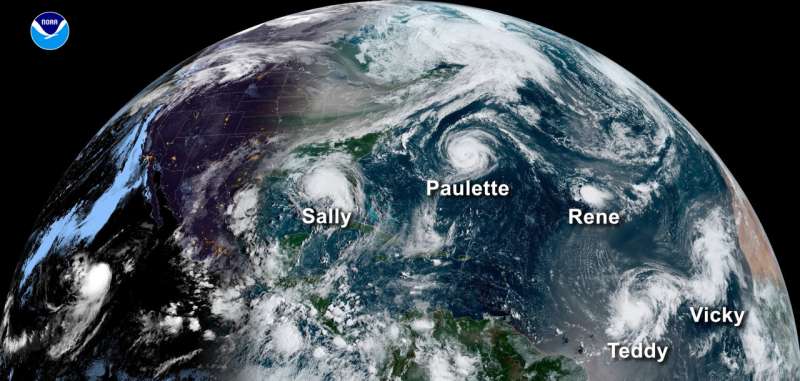Hurricane Cluster Hotspots: 5 Alarming Facts About the North Atlantic
Hurricane cluster hotspots are moving—and that matters a lot. A groundbreaking new study published in Nature Climate Change shows that as our world warms, the likelihood of tropical cyclones forming in clusters in the North Atlantic has surged, and this is serious news for coastal communities.
Understanding the Shift in Hurricane Cluster Hotspots
Climate researchers analyzed decades of data and used probabilistic modeling to uncover a striking trend: the probability of tropical cyclone clusters in the North Atlantic has jumped from about 1.4 ± 0.4% to 14.3 ± 1.2% over the past 46 years.
Simply put, what were once rare simultaneous storms are now significantly more common.
This shift emerged because global warming has changed both the frequency of storms and the behavior of atmospheric wave patterns—particularly synoptic-scale wave trains—that encourage clusters to form. While the western North Pacific was once a main hotspot, the North Atlantic has taken the lead.
Why Hurricane Cluster Hotspots Matter
When two or more hurricanes strike in quick succession, damage compounds. Communities have little time to recover infrastructure, resources, or morale between storms. As noted in the article’s context, the 2020 Atlantic hurricane season saw nine storms form in three weeks, including five simultaneously active storms—highlighting the devastating potential of clustered activity.
What once might have been a single storm now has the potential to arrive in pairs, threes, or more—forming hurricane cluster hotspots that amplify coastal risk.
Probabilistic Modeling: A Powerful Tool
To understand why these clusters are occurring more often, scientists built a probabilistic baseline model that simulates storm formation based on frequency, storm duration, and seasonality. Crucially, their analysis shows the rise in storm frequency is the main driver—explaining between 46% and 128% of the clustering increase. Shorter storm lifespans and earlier or later season timing have secondary effects .
This probabilistic approach not only explains the observed past changes but also offers a method adaptable to other regions—a valuable tool for risk planning.
External Context: A Warming Ocean Driven Trend
Global warming isn’t just nudging these cluster hotspots; it’s fueling hurricane season across the board. NOAA forecasts suggest a likely above-average 2025 Atlantic hurricane season, with 13–19 named storms, 6–10 hurricanes, and 3–5 of those becoming major hurricanes.
Further, record-warm sea surface temperatures—especially in the Gulf of Mexico and western Atlantic—are raising red flags for stronger, wetter storms this season.
Together, these broader climate trends amplify the challenge of hurricane cluster hotspots, increasing the urgency for preparedness.
What Coastal Communities Should Do
-
Risk Assessment: Emergency planners should incorporate clustering probabilities into risk models—not just the chance of an individual storm.
-
Resilient Infrastructure: Building codes, restoration strategies, and supply chains must account for back-to-back storm impacts.
-
Early Warning Systems: Enhanced forecasting and community alerts can help manage cascading storm threats.
-
Education & Outreach: Increasing public awareness—via clear, accessible resources—helps communities stay informed and ready.
More information: Zheng-Hang Fu et al, Shifting hotspot of tropical cyclone clusters in a warming climate, Nature Climate Change (2025). DOI: 10.1038/s41558-025-02397-9
For those interested in other cosmic or extreme-risk topics, check out our posts like
Hubble Captures Interstellar Comet 3I/ATLAS in Stunning Detail
Asteroid Impact Probability: Shocking 1 in 155 Odds of a Strike in Your Lifetime,
Universe Vastness: 7 Astonishing Facts That Will Change How You See Space.

